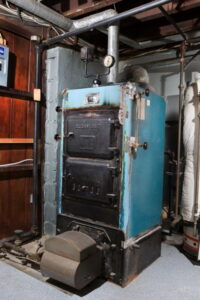
We want to reassure you upfront that natural gas furnaces are not “dangerous” appliances to have in a home. If they were general health hazards, they wouldn’t be allowed into homes in the first place. Modern manufacturers of HVAC equipment build furnaces to the highest safety standards and with multiple precautions built in. If you’ve regularly maintained your furnace and scheduled furnace repair in Pasadena, CA whenever it wasn’t working right, there is minimal chance of the furnace operating unsafely.
But any appliance that burns natural gas can potentially create health hazards because of toxic gas byproducts, and it’s important to know about what may go wrong. In this post, we’re going to look at one potential gas furnace danger and what to do about it: the cracked heat exchanger.
The Heat Exchanger
What’s a heat exchanger? It’s the part of a furnace that actually heats the air moving through it. It’s a metal chamber that traps the hot combustion gas from the burners. The gas heats up the metal of the heat exchanger, and as air from the blower moves around the metal, it picks up the heat. This prevents the combustion gas from ever coming into contact with the air that ends up in the house. The remaining gas byproducts in the heat exchanger are safely vented out a flue.
The Problem With Heat Exchanger Cracks
Over the years, the stress on the heat exchanger from expanding and contracting from heat can cause small fissures to form on it. Another source of cracks on the heat exchanger is corrosion, which can occur because of a chemical reaction between the metal and vapor of the combustion gas. The older the furnace, the more likely cracks will form. When the metal of the exchanger expands, the cracks may open wide enough to allow toxic gas to escape into the airflow, which is hazardous for people in the house.
Preventing, Detecting, and Repairing Heat Exchanger Cracks
The best way to prevent and detect a cracked heat exchanger is to always schedule professional heating maintenance in the fall before you start using the furnace for the season. Our technicians always perform a thorough inspection of the heat exchanger during maintenance, and we’ll detect corrosion and spots where cracks are forming. We can repair this problem by replacing the heat exchanger but, if the furnace is old, it’s much better and safer to have a new furnace installed.
Another key preventative step to protect your health is to have carbon monoxide detectors in your house. These are necessary if you use natural gas in any way—the detectors will alert you in time to vacate the house and contact the gas company. Later you can have our technicians examine the furnace and determine the best next steps.
If you haven’t done so yet this fall, please call us to sign up for one of our maintenance plans. We can then get you on the schedule for the heating maintenance that will help protect your family this winter.
Contact Greenleaf Heating & Cooling if you believe you have a problem with your furnace. We’re your commercial and residential experts in Southern California since 1956.
